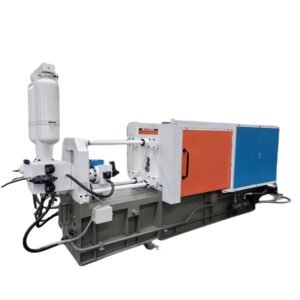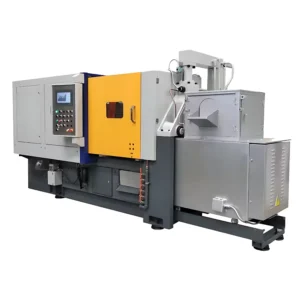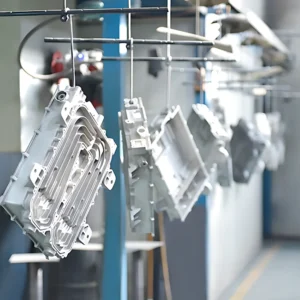Precision machining is a manufacturing process used to produce complex parts with precise specifications using controlled material removal techniques. For example, the answer to the manufacturing method of gears and internal parts of machines is the same: CNC precision machining. This article will explain what precision machining is, how it is done, and its applications.
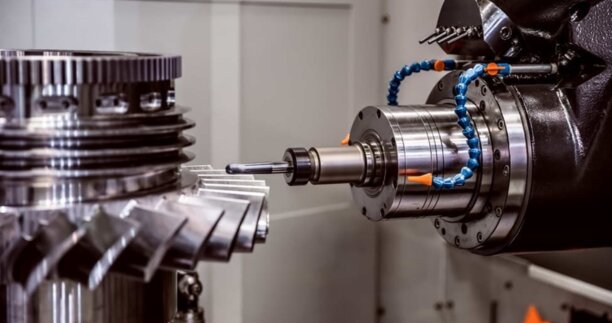
What Is Precision Machining?
When a computer-controlled machine tool is used to manufacture parts, this is called precision machining. It is a high-speed machining process that can produce parts that require tight tolerances, a large number of complex features, or both. Precision machining can be done by skilled operators or even by robots running at high speeds.
In this manufacturing method, the machine starts with a workpiece and uses cutting tools to remove material from the workpiece. With precision machining, many different parts that fit together can be manufactured.
For precision machining to work smoothly, two conditions must be present:
- First, high-quality precision machining requires a high-end cutting tool that carefully removes material so that the product is the right size.
- Second, the machining process requires a computer numerical control (CNC) machine. CNC machines usually have high-speed robotics built in. It automatically handles the cutting tool and tells it where to cut or mill the workpiece.
Read: What is a CNC Machine
How Is the Precision Machining Process Divided into Steps?
For machining various types of parts, most precision machining companies follow a similar set of steps.
Making a Graphic Model
To make any part, a digital model is required. This is done with the help of a tool called Computer Aided Design (CAD). With a CAD program, designers can make two- and three-dimensional models of any part that will be manufactured.
The design usually starts with a rough sketch to help one understand the main idea of the part. Computer-aided design (CAD) artists then use these sketches to produce dimensionally accurate three-dimensional models. There are many well-known computer-aided design software programs, both paid and free. Manufacturers can also hire someone else to do the design for them if the design is complex.
Converting CAD to CAM
With computer-aided design, a visual drawing of the part can be made. This drawing is simple enough for the designer, operator, and manufacturer to understand. The CNC machine that makes the part, on the other hand, cannot directly understand this digital format.
CNC machines need to know exactly where the part or cutting tool is moving. Therefore, the CNC machine needs the part design to provide the proper format to provide the required manufacturing instructions. The files that can be read by CNC machines are produced by computer-aided manufacturing (CAM) software. This is where CAM software comes in: it converts the CAD model into a format that the CNC machine can read.
G-code and M-code are the two types of code used in computer-aided manufacturing (CAM) tools. g-code tells the cutting tool where to go and how to move. On the other hand, M codes are responsible for controlling auxiliary functions of the machine, such as turning the coolant flow on or off.
Setting Up the Machine
Once the CAM file for the part design is ready, it is time to set up the machine. In most cases, this involves calibrating the machine and mounting the part on the machine. Depending on the material of the part and how it is assembled, the machine tool will be different. Different types of precision machining tools are used for different purposes. In this step, you need to make sure that all fixtures are properly tightened and that the machine parameters (e.g. coolant level) are good.
Performing Machining
Once the setup is complete, the machine program is ready to run. Most CNC machines have a screen that allows you to view the program and change different settings. Once the program is run, the CNC machine will immediately begin the precision machining process.
Finishing the Machining
The part can be removed from the precision machine once it has been machined on the machine. Depending on the need, the part may be sent for additional steps such as grinding or cleaning. However, in most cases, the finished precision machined part does not require any additional work.
What Are the Different Methods and Tools Available for Precision Machining?
Precision machining can be used for many different purposes, so there are many different machines and tools available. Different parts require different cutting methods and therefore there are many different types of cutting tools.
CNC Milling
CNC milling is a material reduction manufacturing process. A rotary milling cutter is used to cut off the material from the workpiece. The direction, angle, pressure, and speed of the cutting tool can be changed to get different cutting results. There are many different styles of CNC milling machines such as bed milling machines, box milling machines, C-frame milling machines, floor milling machines, gantry milling machines, horizontal boring machines, knee milling machines, gantry milling machines, turret milling machines and ram milling machines.

CNC Turning
In CNC turning, the workpiece rotates around a central axis while the cutting tool moves in a straight line to remove material from the workpiece. In contrast to CNC milling machines, the cutting tool generally does not rotate. In most cases, a single-point cutting tool is used.
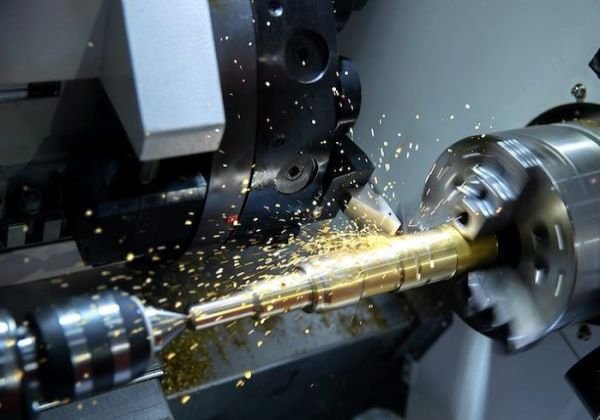
Precision Grinding Machines
Precision grinding is usually one of the final machining processes for parts or components. In precision grinding, an abrasive grinder (also known as a grinding wheel) makes the part being machined completely flat and smooth. Precision grinding also removes small pieces of excess material, which helps in machining end faces with very tight tolerances on the finished product.
CNC Drilling Machine
CNC drilling machines work on the principle that the workpiece is held stationary and a moving drill bit drills holes in the workpiece. These holes can be used to put parts together or for aesthetic purposes. By changing the size of the drill bit, CNC drilling machines can drill different-sized holes. By changing the calibration of the machine, the depth of the holes can be changed.
Multi-axis CNC Machining
Multi-axis CNC machining is a complete manufacturing method. The cutting tool has at least four or more directions of movement. Multi-axis CNC machining allows you to use different cutting tools and methods (such as milling, waterjet cutting, or laser cutting) to manufacture complex parts.
Electrical Discharge Machining
Electrical Discharge Machining (EDM) uses electrical sparks to shape metal. EDM, open molding, wire erosion, wire burning, and spark erosion are other names for this method. Metals are the only materials that can be machined with EDM because they conduct electricity. Electrical discharge machining uses a tool electrode and a workpiece electrode. This method of machining does not make physical contact but simply brings the two electrodes near each other.
This creates an electrical spark between the electrodes, which melts the metal and raises the temperature of the tool electrode. Since it is difficult to machine hard metals with milling tools, EDM is often used to machine the hardest metals. EDM is commonly used to machine holes, slots, and tapers in gears.
CNC Laser Machines
CNC laser machining uses a high-frequency laser beam to cut or engrave objects. On the other hand, laser cutting can also be used to cut non-metals and metals.
Milling and Turning CNC Centers
CNC machines that combine milling and turning operations are known as milling and turning CNC centers or CNC milling lathes. Milling and turning have always been done on different CNC machines. Whereas, integrating them into a single machine makes the production process much easier. There are two different types of CNC turning and milling centers: vertical and horizontal. Vertical is considered more stable due to the effect of gravity on mounting.
Why is CNC Precision Machining a Good Idea?
CNC precision machining can be slightly more expensive compared to other types of machining processes. However, the process is worth the greater investment because it has many benefits. Here are some of those benefits:
Tight Tolerances
The main reason for using CNC precision machining is to obtain very close tolerances. Dimensional accuracy is another name for tolerance. Small differences between the dimensions of a machined part and the dimensions on a CAD drawing are what this term means. To ensure that the tolerances are as small as possible, CNC precision machining uses special methods and cutting tools. This results in machined parts that are more accurate than those on the original drawings.
High Accuracy
Because the tolerances are so small, the finished product of precision machining will oe very accurate. In most cases, precision machining is carried out on parts that need to fit in with other components. Therefore, these parts must be very precise in the later steps so that they work perfectly.
High Repeatability
Repeatability is one of the most important cornerstones of modern industry. For those who use this process, each part should look like any other part. Any change would be seen as a defect. In this case, precision machining is very advantageous. With very precise CNC machining, each part looks almost exactly like the original part.
Low Production Costs
Precision machining is usually error-free, so there are fewer non-conforming products. As a result, parts are less likely to be rejected during machining. As a result, the cost of materials is lower. Labor costs are also lower because the production process is computer-aided and automated. The production cost of CNC machining is lower than any other method because both labor and material prices are decreasing.
Speed and Efficiency
The use of high-speed robotics in precision machining allows parts to be machined faster than if they were done manually on a regular lathe. The parts are also very accurate and the surface finish is very close to standard, so no additional steps are required. This speeds up the production process, which increases the productivity and efficiency of the organization.
Safety
CNC machines use computerized numerical controls rather than human beings to do the work, so cutting avoids the risk factors that can arise. People can move on to jobs that require more skills, such as CNC design operations.
Why Do We Need Precision Machined Parts?
One of the biggest advantages of CNC machining is the ability to create very precise parts. Generally, simple machining tasks can also be accomplished by hand, where a trained machinist moves a machine arm over the workpiece by hand to cut.
On the other hand, it is difficult to machine workpieces with very fine details and very small tolerances by hand. This is where a computerized control system that follows a numerical model has a real advantage. For almost any reason, a business may need precision machined parts. Here are some of the most common reasons.
Collective Machining
To put parts together in a larger system, precision machining is important because it allows for very close tolerances. If the dimensions do not match the design, the parts may not fit together and thus become useless.
Even if assembly is technically possible, the person buying the product does not want to see gaps or overhangs where parts should be flush.
Aesthetics and Fashion
High precision may also be required for parts that need to be aesthetically pleasing or visible to people, as defects or distortions are unacceptable. For some products, internal parts may require standard machining while exposed or surface parts require precision machining. This is because obvious defects can make the product look unsightly or may pose a hazard (e.g. if the edges are accidentally made too sharp).
Added Value
A simple reason for choosing precision machining is that high-quality parts manufactured to exacting standards can be sold at a higher price. Individual parts for high-value products (such as stereo systems or smartphones) can only achieve a high market value if they are manufactured to a high standard.
When is Precision Machining Not Needed?
Precision machining has many benefits, but companies should be careful when setting tight tolerances.
It is not necessary to set tight tolerances when standard machining tolerances work properly. This is because precision machining can be a waste of time and money.
For example, a part that requires a 0.01 mm tolerance may require a completely new machine setup compared to a part with the same feature that requires a 0.05 mm tolerance, which would significantly increase the cost of the job.
If you get a quote from a Request for Quotation (RFQ) that is higher than you thought, try to reduce those measurement tolerances that are not very important.
Where Does Precision Machining Fit in?
Precision machining is important in many areas, whether it is for manufacturing tools or final products. Precision CNC machining can be used in the following areas:
Prototyping. Precision machining is used by a variety of companies to create prototypes. To show how a product works, the prototype needs to be very close to the final design. The best way to fulfill these requirements is precision machining.
Automotive. The automotive industry requires complex gears and parts for engine parts, wheels, and nuts. Precision machining tools are used to manufacture these parts for cars, trucks, boats, airplanes, and two-wheelers.
Medical Business. The technology used in medicine is becoming more and more complex. In the medical field, some automated tools and machines can even perform surgery. Precision machining technology makes possible the complex micro-machining required for these devices.
Aerospace. Some of the most sophisticated tools, materials, and technologies are used in the aerospace sector. It requires a type of machining that is both very precise and robust enough to process the toughest materials. In aerospace, precision machining makes it easy to manufacture a wide range of parts, from prototypes to full-size parts.
Defense Industries. Both the aerospace and defense industries must meet certain standards. The toughest materials must be used and they must be machined with extreme precision. It can be used for many different purposes, from making prototypes of new weapons to building entire missile systems.
How Much Does Precision Machining Usually Cost?
The price of precision machining can change due to several factors, so it is difficult to give an exact price. There are many different components to CNC machining and each one has a different price. In the case of precision machining tools, for example, you can choose the number of axes you need. On an hourly rate basis, having a machine with more than three axes can cost two to three times as much as a three-axis machine.
In addition to the price of a computer-aided manufacturing (CAM) program, there are many other costs, such as the hourly rate of a precision machinist (depending on his or her skill set), and so on.
More detailed CNC cost per hour can be viewed here.
Selecting Precision Machining Services
Outsourcing your machining needs to China Casting Synergy Group is one of the best ways to reduce costs while still getting the best precision machining results. When you partner with China Casting Synergy Group for specialized precision machining, you can choose from 3-axis, 4-axis, or even 5-axis CNC machining of parts. We can customize the process to fit the needs of our customers.
China Casting Synergy Group receives many RfQs for precision machining work, and we know that some parts require more attention and care than others, but we are committed to providing you with affordable pricing, even for tight-specification machining.
Summarizing
Now you know what precision machining is. And how most companies are involved in precision machining work. Precision machining is now a necessary technology for very complex and collaborative CNC work. Every millimeter counts when micron-level accuracy is required. Precision machining is the only way to obtain this beauty.
To get the most bang for your buck without sacrificing accuracy, precision machining is the way to go. Because of this, the process has become the most common method for creating prototypes or large quantities of parts. If you need reliable precision machining services, contact China Casting Synergy Group and we will send you a price within 24 hours.

